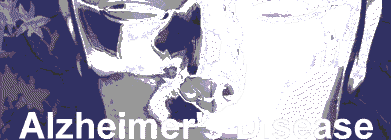‘I knew something was wrong with me, but I didn’t want this to be seen by anyone else. I wanted to stay ‘normal,’ but I found it was [long pause] hard. A struggle. [Pause] I had to make lots of lists and keep them in the house or car. We argued a lot because I never wanted to go out. Scared you see. I was always terrified my wife would find out.
– 67-year-old man with Alzheimer’s disease (State of the Art in Dementia Care)
Named for Dr. Alois Alzheimer, who first identified the disease in 1907, Alzheimer’s disease is a neurodegenerative disorder characterised by the destruction of brain cells. Alzheimer’s disease is accompanied by the impairment of short- and long-term memory and other intellectual capabilities. As the brain cells die, the individual’s ability to function worsens progressively, leading eventually to a loss of most functional skills, including an understanding of spatial relationships. It is also accompanied by incontinence and the inability to read, reason and communicate. The immune system deteriorates, and the eventual outcome is death.
Diagnosing and Treating Alzheimer’s Disease
Although research is under way, little is known about causes and treatments for Alzheimer’s disease. Even diagnosis is difficult. A definitive diagnosis depends on an analysis of tell-tale senile plaque and neurofibrillary tangles found in brain tissue after death. A careful clinical examination, however, can result in a possible or probable diagnosis, based on deficits in cognitive abilities and the presence or absence of a second illness that can cause dementia. (See appendix for diagnostic criteria.)
Risk Factors
Risk factors are difficult to assess because data is often reliant on third-party reports. Screening and diagnostic criteria also differ. The most recent EURODEM study, an analysis of dementia in Europe, assesses comparable data from several European studies to arrive at probable risk factors. (Launer 1999)
1. Age
Although ageing is by no means a causative factor in Alzheimer’s disease, the disorder is clearly age-related. According to Alzheimer Europe, about one person in 20 over the age of 65 has the disease compared to the below-65 population, where the incidence is less than one person in 1,000. (AlzEur)
2. Heredity
Despite a small percentage of apparently familial cases, heredity seems to play a minor role at best. The latest EURODEM study found some increased risk in families with a history of Alzheimer’s disease, but not significantly so. (Launer 1999) There is some evidence that certain genes may predispose a person to Alzheimer’s disease, specifically, a gene found on chromosome 19 that is responsible for the production of a protein called apolipoprotein E (apoE. However, there are as yet no firm genetic predictors of who will or will not actually have the disease. The field of genomic research is one that holds great hope for unraveling the mysteries of the disease. [AlzEur]
3. Gender
Gender appears to be a factor. The risk is greater for men up to age 75, but rises for women in older age groups, in part because of women’s greater longevity. (Hofman 1991) A new study shows that women have a higher relative risk for dementia, particularly for Alzheimer’s disease. (Launer 1999)
4. Education
Educational levels may play a role, although the reasons for this are not certain. The most recent EURODEM study shows that the relative risk for people with less than seven years of education is twice that for people with more than 11 years. According to the data, this may be particularly true for women. (Launer 1999) This finding may be related to socio-economic factors, diagnostic bias in neurological tests or may be a biological marker in some cases.
5. Smoking
The same study suggests that smoking, once thought to be a sign of reduced risk, is actually associated with higher risk, particularly for men. Current smokers appear to have a relative risk 1.74 times greater than those who have never smoked and a somewhat greater risk than that of former smokers. According to the EURODEM study, this increased risk is consistent with other findings, particularly the role of smoking in cerebrovascular disease. (Launer 1999)
6. Head trauma
Data on head trauma with unconsciousness as a significant risk factor are inconclusive. (Launer 1999)
Diagnosis
At this time there are no tests that predict whether a person will develop Alzheimer’s disease. The disease is diagnosed by a process of elimination and by examination of a patient’s physical and mental state using standard criteria as set forth in the standard Diagnostic and Statistical Manual of Mental Disorders (DSM-IV) and the National Institute of Neurological and Communicative Disorders and Stroke-Alzheimer’s Disease and Related Disorders Association (NINCDS-ADRDA). (See appendix.)
Although early diagnosis is difficult in many cases, it can allow some patients to make necessary arrangements for care. Some can also benefit from new medications that may provide a measure of symptomatic relief. Unfortunately, many general practitioners are not trained to recognize the disorder and do not diagnose it until the condition has become severe. In addition, the availability and quality of specialist care varies greatly from country to country as well as within countries.
A physical examination can rule out other dementias, such as those related to drug interactions, hypertension and other disorders. Physicians look for signs of deterioration in memory, language and thought. For example, people suffering from Alzheimer’s disease tend to lose short-term memory, forget what words mean, become unable to recognise familiar people and objects and unable to orient themselves spatially. As deterioration continues, their ability to carry out such simple activities of daily living as dressing, bathing, toileting or even chewing and swallowing is increasingly impaired.
Changes in mood, personality and behaviour are all too common. People with Alzheimer’s disease are prone to wander at any time of day or night. They may be incontinent, disoriented in time and space or demonstrate uncharacteristically aggressive behaviour. Alzheimer’s patients tend to lose weight and muscle tone. Vision is often affected. They become more vulnerable to infection, making them prone to other diseases.
Treatment
The primary treatment is non-pharmacological – the millions of families, paid and unpaid carers, day and long-term care centres and clinical practitioners who perform the difficult task of caring for those with Alzheimer’s disease.
There is, as yet, no cure for Alzheimer’s disease. That is not to say there is no light on the horizon. Treatments continue in development. Drugs designed to interfere with the progression of the disease and alleviate some of the symptoms are available. These drugs, which work by inhibiting the brain’s production of acetylcholinesterase, an enzyme implicated in Alzheimer’s disease, have been of benefit to some patients for short periods of time, but side effects often prove difficult. Long-term outcomes of drug therapy are not yet known. A further difficulty is the importance of introducing drug therapy early in the disease. Most general practitioners, however, do not diagnose Alzheimer’s disease early enough for any treatment to be effective. In addition, too many doctors do not treat their older patients aggressively, attributing diseases amenable to cure to ‘old age.’
Extensive research on new treatments is ongoing. Investigators are evaluating other potentially promising approaches, including examining genetic abnormalities associated with the disorder, looking at drugs now used to treat other diseases, studying the female hormone estrogen, trying combinations of treatments and studying relationships between Alzheimer’s and cardiovascular disease.
Researchers are studying proteins, such as apolipoprotein E4 (apoE4) and ubiquitin, that have been shown to be associated with Alzheimer’s disease, as well as beta-amyloid, the major component of senile plaque, and its relationship to serum cholester.

